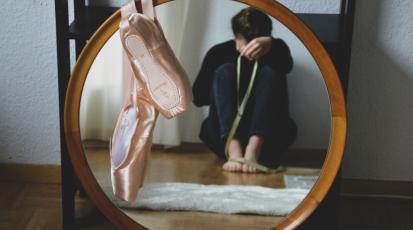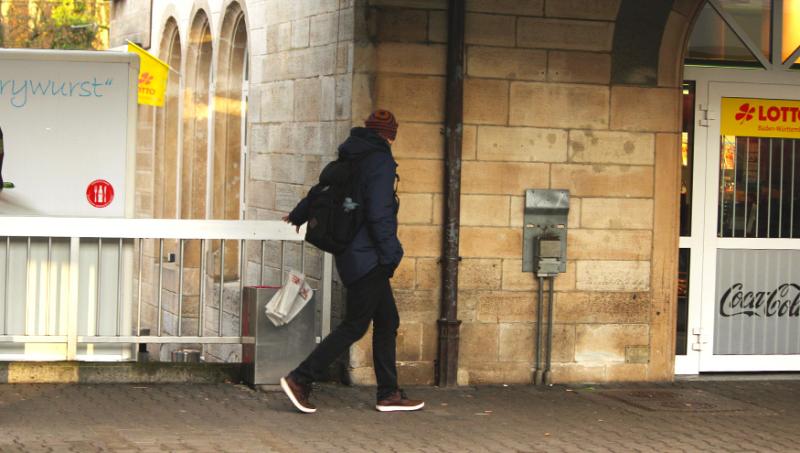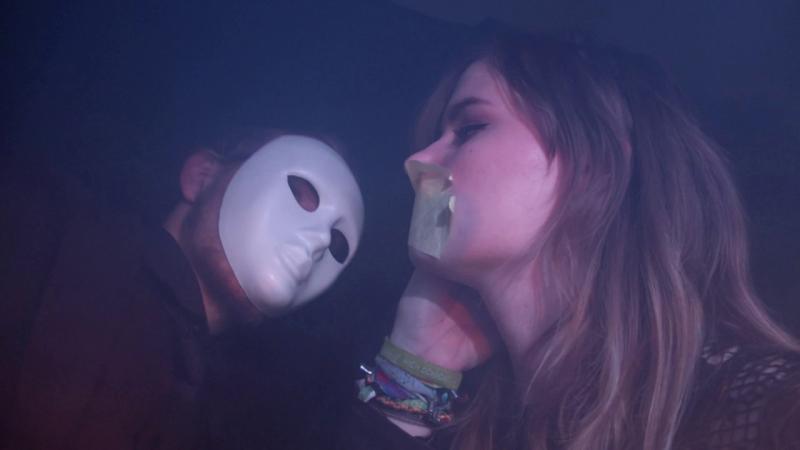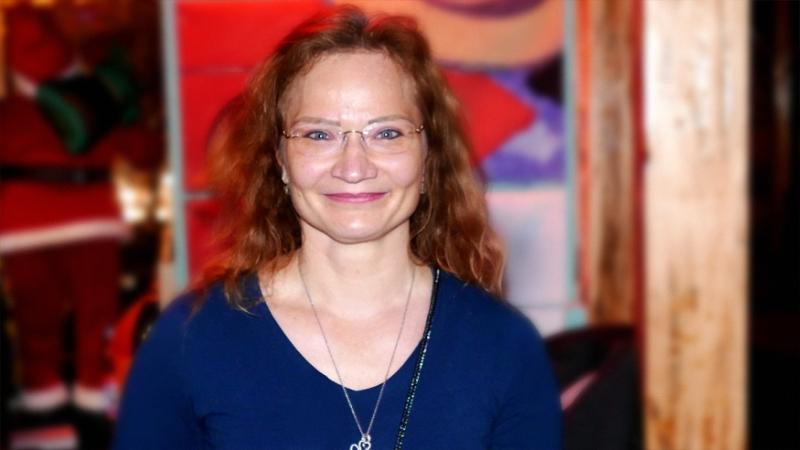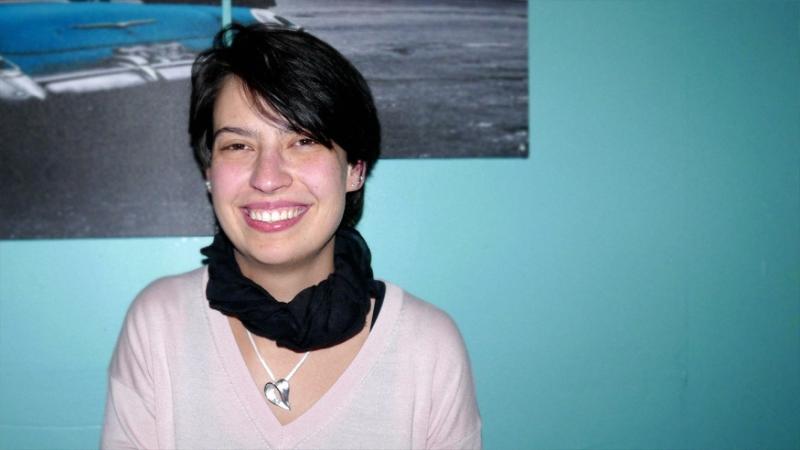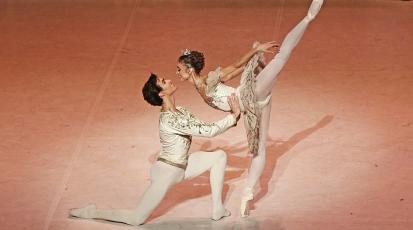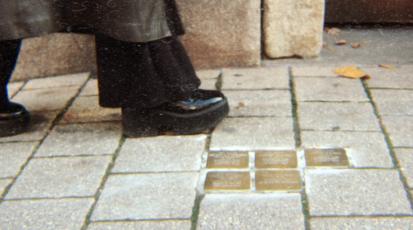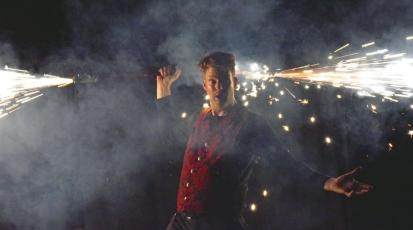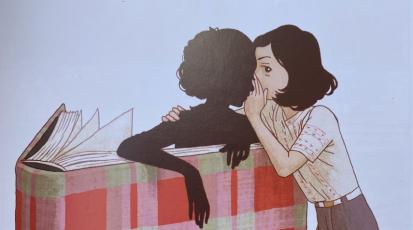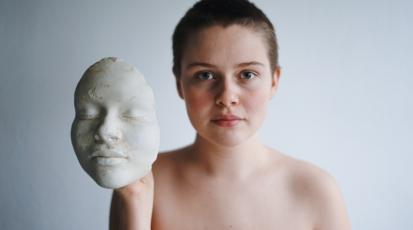"Bodies aren't made to look the same. We're all different people, different human beings."
Switching Positions?
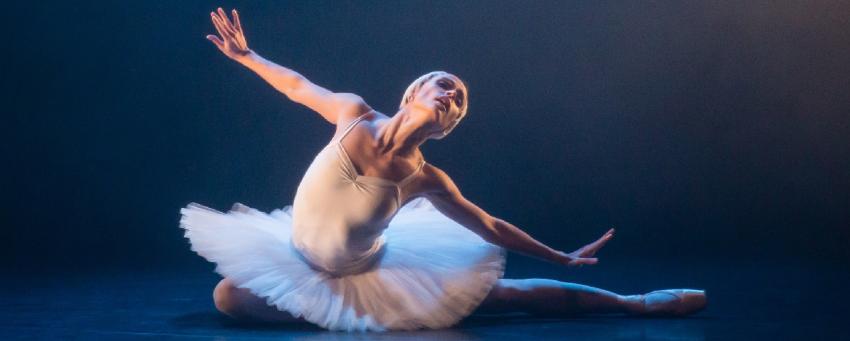
Hundreds of pairs of eyes gaze intently at a closed curtain that could open every minute. The orchestra begins, plays the opening piece and after a few beats the curtain slowly opens. The audience sits on the edge of their seats as the dancers enter the stage. You could almost believe they’re floating, so fast do their feet move across the wooden floor.
The muscular legs make the dancers seem to jump light-footedly. Soft arms and fingertips, flowing movements of elegant bodies, stretched toes, straight backs and a smile on every face, make the dancers' movements seem easy and light-hearted. The female dancers are all the same size and slim, nobody and no body stands out. They form the perfect image of a snowy landscape.
The last scene is over and the dancers bow elegantly. The audience slowly arrives back in the real world, heading home inspired by a perfect evening of ballet. Nobody seems to wonder what it might look like behind the curtain when it closes.
1st Act: "Ballare"
Just like the dance, the word ballet comes from Italy. Since the 15th century Italian Renaissance courts, people dance ballet, or as it is called in Italian, people “ballare” ballet.
It was Catherine de Medici who brought ballet to France, where the first ballerina stepped onto the stage in 1681. Ballet was more of a male sport in the beginning.
Ballet was also gaining popularity in Russia, where Russian choreographers and composers took ballet, in the last half of the 19th century, to a new level. Classical ballet was born and works such as "The Nutcracker", "The Sleeping Beauty" or "Swan Lake" were created. But the technique also gained in standard: dancing on pointe shoes, the precision of the movements to name just a few. In addition, the classical tutu was established, which was much shorter and stiffer than the romantic one. It was meant to show the legs and feet of the ballerina and present the difficulties of her movements.
2nd Act: Behind the closed curtain
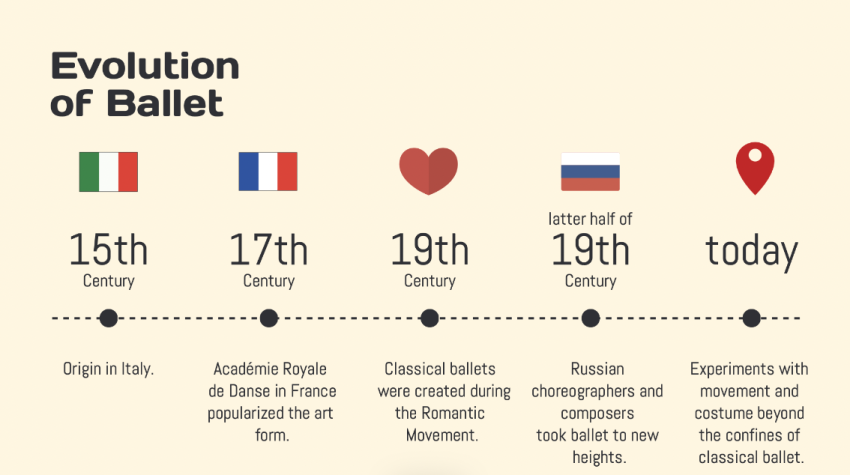
But what hides behind the perfectly executed jumps, skinny long legs and identically synchronized choreographies? Optimists would probably say untamed passion, but that is only one side of this bittersweet world. In order to become what ballet has over the centuries, the dark side of the sport is also (and above all) important to mention: Eating disorders, injuries and constant physical and mental strain are daily business professional dancers and therefore also a big part of ballet.
To get a role in a ballet classic like Swan Lake and Co. requires - at least at London's Royal Ballet — at least 6 hours of training a day, plus a spindly body and perfection in the execution of every single movement. According to a German study from 2012 “Ballet as a competitive sport — health risks using the example of acute injuries of dance students”, every third ballet dancer is seriously injured once a year — not even counting daily injuries such as bleeding feet. No wonder, considering that the sport starts from a basic position the human body is not made for per se. "En dehors" is the name of this permanent position in ballet, in which the knees and toes are turned unnaturally outwards and therefore fundamentally contradict with human physiology.
But the dancers are happy to put up with all this in order to float across the stage in their tutus, as light and carefree as if, in addition to the training and costumes, a little magic is also necessary to achieve the perfection that the sport entails. And in addition to the struggle to achieve precisely this perfection, many dancers also have another one on their agenda - the struggles with eating disorders.
Years of history in the prestigious sport show that dancers should be as thin and petite as possible and everybody should look the same — a standard that is the downfall of many. “But bodies aren't made to look the same. We're all different people, different human beings”, Eric Gauthier, the artistic director of one of the most successful German dance companies “Gauthier Dance” which is based in Stuttgart points out.
However, 16 percent of all ballet dancers suffer from acute eating disorders, as the study “Prevalence of eating disorders amongst dancers: a systemic review and meta-analysis” from 2014 shows. Ballet dancer Clara Schindler from Stuttgart who decided against trying to build a professional career and is doing ballet as a hobby also made some experiences in that regard: "I've never explicitly started to eat less or anything else, because I just love food too much for that, but I've sometimes eaten it with a guilty conscience.”
Auch interessant
Reasons for the massive problems with eating disorders especially in ballet is the great pressure the dancers have to deal with every day – and which is often promoted by the ballet schools themselves. Ballet teachers demand a lot, and sometimes may ignore the real condition of their students in all the wrong places. Often the competence seems to be right, but not the pedagogical training, as professional dancing student Helene Lohr from Iwanson International School Of Contemporary Dance in Munich has also experienced: "I also think sometimes that teachers perhaps only deal with the students in their own way, because they had to experience it themselves and not because it is really beneficial."
But especially in a sport such as ballet, you should take care of your body, because you depend on it, which also Gauthier confirms: “Your body is your instrument. It's like a violinist, a cellist. You have to take care of that damn thing, or you will never play it on stage again.”
But there is more. Because in addition to all the problems and massive pressure dancers have to experience, ballet itself seems to be getting on in years. Even if the sport is exceedingly traditional and time-honored - can it really still be okay in the 21st century to perform pieces like Petrushka or the Nutcracker, where stereotypes are a big part of the performance and blackfacing is unfortunately not a thing of the past? All these aspects lead to the justifiable question: Is ballet still contemporary at all?
3rd Act: Ballet in Transition
Time itself is perhaps the decisive factor in finding a solution to the obvious problems of the sport. After all, it is logical: The famous ballets like Nutcracker or Swan Lake have their origins in the 19th century. “And then a ballet from the 18th/19th century is performed at a completely different time, e.g. in 2023 , where the social discourse is completely different, and then we realise that there are problematic passages in the work that we cannot leave uncommented”, Christiane Theobald, artistic director of the Berliner Staatsballett, points out.
But how can these problematic parts of the present be changed in the future without losing the tradition and the core of ballet?
This can be done with some rearrangements and contextualization, which are already being worked on in many places - literally behind the scenes. Let's stay with the problem of original versions of classical ballets that take up stereotypes that are considered questionable today and promote racism and classism. According to Christine Theobald, there is a huge difference between performing an original version and interpreting it more freely: "If we decide not to use the original version, not to use the historical original text in story and choreography, but to adapt or reinterpret the work in the present time, that is, away from the reconstruction of an original version, then we get much more freedom and scope."
The context in which the pieces are set is also important. At the Berliner Staatsballett for example, the backgrounds and origins of classical plays are explained in accompanying information events and notes in the programme booklet. Another important point on the programme order: check each piece through Sensitivity Reading.
Sensitivity Reading
Sensitivity reading is a special form of editing. The aim is to ensure a sensitive, non-discriminatory and stereotype-free approach in the representation of marginalised groups of people. These groups include, for example, BIPoC, people with physical or mental illnesses, people with disabilities, people from the LGBTQ* community, and many more.
There is also a shift happening in many ballet companies. Not only in smaller, contemporary companies, but also big ballets like the Paris Opera or the New York Ballet are dancing in a more modern way. Gauthier also says that “modern dance is leaking through the cracks everywhere. Because that’s what the audience from today wants to see more and more.”
Furthermore, a lot is already being done with regard to the dancers' mental and physical health - especially the latter. For years, ballerinas "only" rehearsed their choreography and largely limited their training to that. The Health Department at London's Royal Ballet, which opened in 2013, has turned this training upside down and developed a sports technology that better prepares dancers' bodies for their extreme sport - through fitness and strength training that is perfectly adapted to the individual. The Berlin company also has such a health department, where the dancers' mental health is also treated and they learn how to cope better with the pressure.
The most important point is: there is not only black and white. The many classical and long-established companies are gradually being joined by more and more modern ballet schools that look at the sport from a different perspective and consciously counteract the problems associated with the sport.



